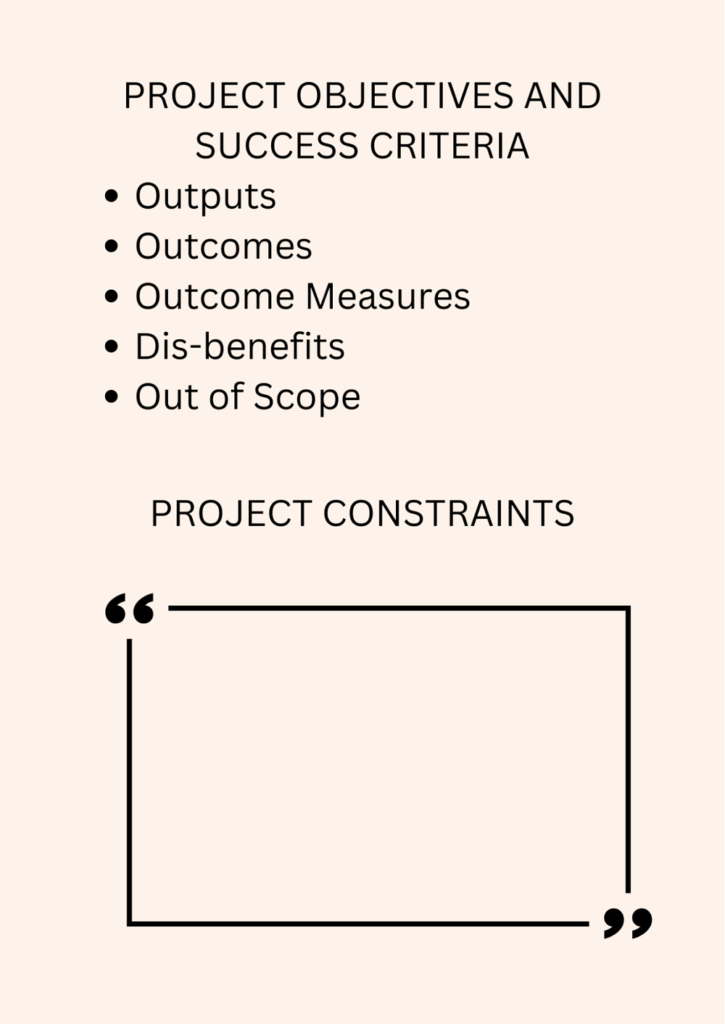An IBM study found that 68% of failed projects can be attributed to incompetent management. In addition, people experience at least 7 interruptions each hour, or nearly 56 disruptions, throughout a regular workday. You can avoid all of these by negating poor management conditions. However, you cannot regulate well-managed projects without a good start. A project Initiation Document (PID) serves as a great project initiation guide.
In this article, we delve deeper into the details of PID.
What is a Project Initiation Document (PID)?
A project Initiation Document (PID) describes a project’s goals, scope, resources, schedule, and budget. PID is a beginning point for ramp-up, a safety net if resourcing changes. Moreover, it’s a tool for the team to get started on a project. As the digital project manager, you must position the team for success. Therefore, give the team the upfront information and set the context with a Project Initiation Document (PID).
What is the Purpose of a Project Initiation Document?
The Project Initiation Document (PID) describes the project and forms the framework for its management. In addition, it delivers an assessment of the project’s overall performance. The Program/Project Board must be confident in the project’s viability before making any significant commitment. Therefore, Project Initiation Document (PID) is a must. As a result, the Program/Project Board and Project Manager have something to use as a yardstick for
- evaluating development,
- change management challenges,
- and ongoing viability concerns.
Once the Program/Project Board has approved it, this document becomes the starting point for the project. Take our Project Management Course to understand Project Boards further. You will refer to Project Initiation Document (PID) anytime you reach a critical decision. In addition, you will use the document at the project conclusion to gauge success. Also, it will aid in answering the following questions.
- Was the project successfully managed?
- Did the project produce the expected outcomes?
- What is the Business Case?
- What is your spending plan?
- What is this project’s scope?
- What are the project managers’ roles?
- Who are the project stakeholders?
- Project delivery—how and when?
- What is your quality assurance plan?
However, the documents that surround PID will be fluid. For example, you must change the documents to meet the project’s demands. Also, the documents change due to the results of stage-end evaluations. But avoid updating the Project Initiation Document (PID) without the approval of the Project Board.

What is included in a Project Initiation Document (PID)?
The project Initiation Document (PID) comprises all management documents except the Benefits Management Approach from the Initiation Stage. In addition, the document includes the project brief from the Starting Up a Project process. Also, conversations about needs with users go into a PID. Finally, discussions about value for money, business standards, and controls with suppliers must be present in the PID.
Why is a Project Initiation Document Needed?
A Project Initiation Document (PID) is essential to get a project off to the appropriate start. In addition, the document provides foreknowledge of the project’s success. PID aids the team in delivering early guidance toward a successful project launch. Moreover, it prevents adding an excessive amount of effort upfront.

Project Initiation Document (PID) may serve as a living resource on which the team may rely. In addition, it offers protection in case resources are changed. For example, don’t worry about adding new team members. Project Initiation Document (PID) assures that resources change viably. Moreover, it establishes the project’s tenor, context, standards, and limitations.
How to Make a Project Initiation Document (PID)?
To successfully make a Project Initiation Document (PID), ask yourself the following questions.
1. What is the Project Context?
List the strategic vision, objectives, and goals for each project. Start with a high-level mission statement. As a result, the team will be more cohesive. In addition, help them remember these objectives by brainstorming solutions. As the team keeps the context in mind, it will assist in defining additional work. Finally, you can identify prospective project enhancements.

2. What are the Project’s Parameters?
Establish the strategy for the team in your Project Initiation Document (PID) and outline the scope. Also, remain open and honest about the project’s parameters like the budget, schedule, vision, and initial goal. The aim is to enable all team members to collaborate to deliver your project.
In the end, the group triumphs or fails together. If members don’t cooperate, it’s exceedingly unlikely for the project to be successful. Create a team of specialists rather than a team of individuals. Then, it’ll be much easier to generate a sense of teamwork early on.
3. What are the Specifics of the Project?
Define the project’s specifics in your Project Initiation Document (PID). Your team must comprehend precisely what it must do and deliver. So, firstly, identify what from the previous projects you’ll include or exclude from the current project. Next, define early project specifications. Thirdly, establish the project’s restrictions that the team must adhere to.
Fourthly, discuss the necessary deliverables. Your team must be aware of your or the client’s expectations. Finally, outline reasonable presumptions and restrictions.

4. What are the Project Breakdown Structure and Resource Allocation Strategies?
It is crucial to divide the work into smaller portions and produce a project breakdown. The breakdown should detail the allocations, so the team knows how the deliverables are made. In addition, it should demonstrate how you put deliverables together and who will be collaborating on what.
To get feedback and assist you to optimise, walk the team through the project’s task breakdown structure and general rough planning. As a result, dependencies will be obvious. Additionally, it promotes accountability and understanding of the entire project. These divisions can lay out the many steps in each phase and range. Furthermore, they can be linked to particular dates and integrated into resource planning.
5. What is the Role of a Team Member?
The project’s entire internal and external organisation are crucial components of a Project Initiation Document (PID). Identify whole gets employed by the team. In addition, assign someone before giving anything to a client. Furthermore, identify the person you’ll contact before signing off. Doing all these can prevent misunderstandings. All in all, you’ll also get an indication of how complicated sign-offs will be.
6. What are Your Challenges, Dependencies, Risks, and Assumptions?
Incorporate a summary of known hazards and limitations within the Project Initiation Document (PID). Projects can be complex for a variety of reasons. Therefore, it’s always a good idea to plan and foresee some project risks and problems. In addition, it also helps develop mitigation techniques.
Overly tight or too loose deadlines can hamper the project. Identify financial limitations and technical ambiguities. In addition, identify a single point of failure in a complex stakeholder landscape.
What is Agile?
The term ‘agile’ is very broad. It is viewed in many ways throughout the agile community. There is a set of well-known frameworks referred to as ‘agile methods’. And there are also well-known behaviours, concepts, and techniques that are recognised as characterising the agile way of working. But no single definition of agile accurately encapsulates them all.
The lifecycle of an agile development project is more workable than predictable. Let’s see each lifecycle and how they’re defined in Agile.
1. Predictive Lifecycles
Predictive lifecycles are employed when the results of a project are already known. Most products are still usable after their expected lifespans have passed. Predictiveness permeates each stage of these programs’ development and implementation.
2. Adaptive Lifecycles
Adaptive lifecycles are helpful when there is a lack of certainty in the market, or the user community or stakeholders need to reach a consensus. These iterative processes improve the product by centring on customer needs and organisational goals.
You can achieve it by organising the project’s execution into short cycles that target specific features (the most important ones), providing a possibly release-ready product to the client/users, soliciting feedback, and then defining the next short cycle. We term this cycle of existence “adaptive” since it constantly changes in response to user feedback.
Agile: The Benefits and Drawbacks
Agile is not the solution to all kinds of project management problems. It has some drawbacks too.
Benefits | Drawbacks |
Agile is the best way to go when you can map out the broad strokes of a project’s requirements at the outset. | Due to financial or time restrictions, a project may fail to complete all of its promised outcomes. |
The likelihood of a successful rollout is high thanks to a consistent, coordinated effort from all stakeholders. | It might be difficult for the project team and the business to work together effectively if they are not in the exact physical location. |
Because of extensive learning, you can refine procedures and strategies over time. | Conflicting opinions from stakeholders can make it difficult to establish priorities for the backlog. |
During the entirety of a project’s execution, benefits become apparent. | It’s more difficult to tell when you need essential resources in an agile environment. |
What is a Project Initiation Document (PID) in Agile?
PID should adhere to the guidelines outlined by PRINCE2 Agile, which are as follows:
- The delivery layer can benefit from being on a higher level, allowing for self-organisation and flexibility.
- It should be shorter and easier to understand than usual.
- It must be in a casual setting.
- Potentially, you would show it on Information Radiators (informative workspace).
- Sometimes, you can use a workshop setting to generate the content.
- In addition, include the Agilometer evaluation findings.
- You may set project-level time and cost tolerances to zero to manage the output amount.
Ensure that Project Initiation Document (PID) doesn’t lack the necessary detail. Too much specificity would stifle self-organisation and adaptation at the delivery stage. In addition, a lack of detail will prevent the plan from evolving as needed.
PID Project Management Example
An appropriate Project Initiation Document (PID) length may vary from one project to the next. In addition, it involves the aims of the project. Here is a complete Project Initiation Document (PID) example for your perusal and study.
Example of a PID
There are several constituent parts of a PID. The following images show the range of possible content for a PID. However, you can add more topics per the project requirements.









The project’s title and the authors’ names are apparent inclusions on the cover page. It will also mention the number of drafts. In addition, on the introductory page, you will provide more information on the previous drafts.

FAQs
Is a Project Initiation Document (PID) a Living Document?
The Project Initiation Document (PID) is, in fact, a living document. Changes and updates to the document regularly give it a dynamic quality. More than that, it details the project’s current state, management, and end goals. The project status is not a stationary thing. Constant change is a hallmark of this phenomenon. While the long-term objectives may stay the same, the near-term priorities will likely shift frequently. For this reason, Project Initiation Document (PID) is not a static record but a progressing and ever-evolving entity.
Is the Project Initiation Document (PID) the Same as PMP?
The PMP, or Project Management Plan, cannot be changed. In other words, it serves as a preset tutorial for a specific system. You can always rely on the plan for guidance because it remains unchanged no matter what happens. As a result, you can learn the basics of the approach and the duties at hand. PMP details the steps necessary to complete a given project. While in use, you cannot modify a PMP. If an update to the PMP is essential, you must put strict change controls in place.
However, Project Initiation Document (PID) is an active record. Therefore, as the project progresses, you’ll adjust the PID. So, Project Initiation Document (PID) and Project Management Plan (PMP) are two separate concepts.
Is a Project Plan the Same as a PID?
The Project Plan (PP) is a high-level summary of the plan with less emphasis on the particulars. In contrast to PID, it focuses on strategic planning for the foreseeable future.
Let’s first compare PP with PMP.
- PMP deals with the “how” of the project. In contrast, PP deals with the “what” of the project.
- PMP is an implementation strategy. In contrast, PP is a visionary document.
- PMP outlines and creates the framework for carrying out the project successfully. However, PP allows you to see well enough to do so.
- While the PP and PMP roles are distinct on larger projects, you can merge them on more manageable assignments.

Since both PP and PMP involve looking far into the future, they are naturally related. However, the Project Initiation Document (PID) contains all of the project’s goals. On the other hand, Project Plan (PP) involves deliverables, strategy, implementation, results, and post-project planning. Therefore, the PP can be used to your advantage when developing a Project Initiation Document (PID). But it would be best not to include the entire PP within a PID.
Is a Project Initiation Document (PID) the Same as a Project Brief?
You will require a Project Initiation Document (PID) along with a Project Charter (PC) or Project Brief (PB) at the beginning of a project. However, Project Initiation Document (PID) is not the same as a Project Charger (PC) or Project Brief (PB). Both depend on the scale of your project and the project management approach your organisation uses. A PID contains more specific information than a PB.
To put it simply, PB is a synopsis of your project’s most essential aspects. You can think of it as a synopsis of the project’s various departments and involved parties. Finally, PB needs to specify what you expect of them regarding the project’s scope. In addition, PB will not bombard your stakeholders with too much information.
Your project’s magnitude and complexity will dictate the PB you create. While Project Initiation Document (PID) is the entire document, you may use PB as a summary. For some projects, your PB may be as short as a paragraph, while for others, it may span multiple pages. Large projects’ Project Initiation Document (PID) might run into tens of pages.
Summary
Project Initiation Documents outline a project’s goals, parameters, resources, timetable, and budget. In addition, it’s a project launcher, resource reallocation backup, and ramp-up tool. Also, you must include risks and restrictions in your PID. It’ll help you anticipate project risks and issues.
Moreover, identify the single point of failure and financial or technical risks. Project Initiation Document (PID) develops and grows. It’s not just a collection of information. PIDs in agile should follow PRINCE2 Agile guidelines. Learn more about PIDs in our Project Management Course to handle your project successfully.

![How-to-Make-a-Project-Initiation-Document?-[Full Guide]](https://www.oneeducation.org.uk/wp-content/uploads/2023/01/How-to-Make-a-Project-Initiation-Document-Full-Guide.png)
 January 24, 2023
January 24, 2023
















